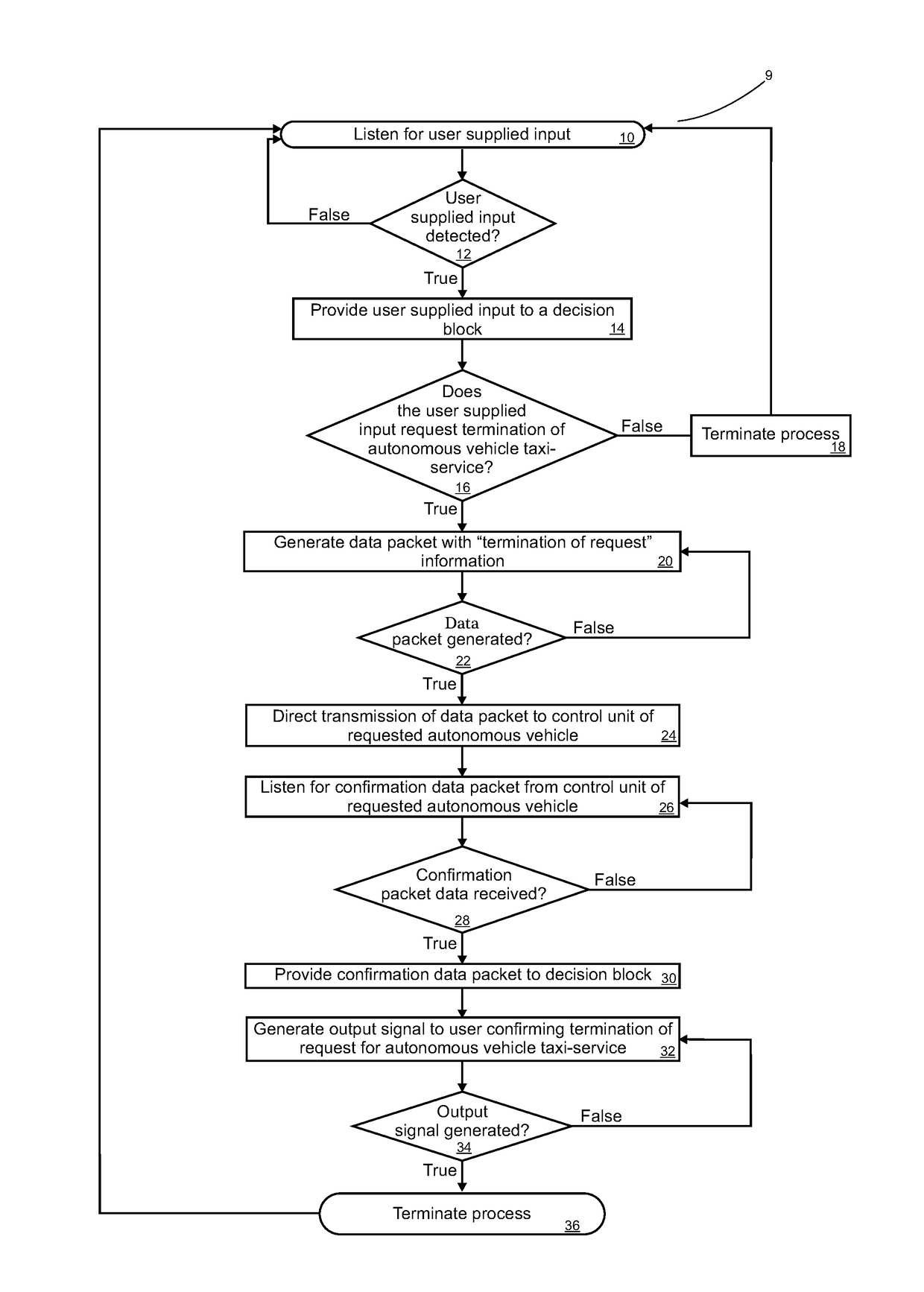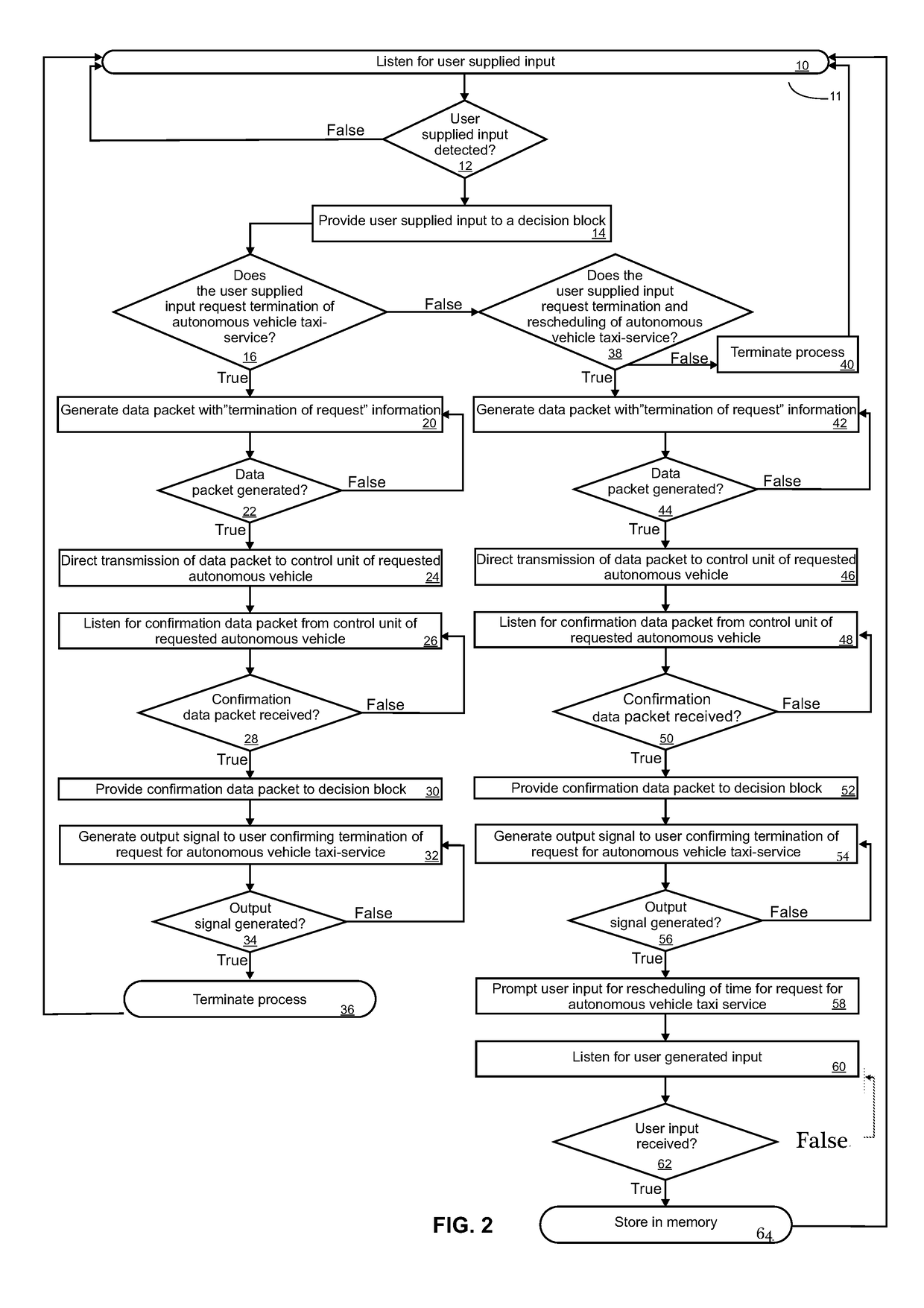System, apparatus, and method for generating and transmitting an interruption signal to a substantially autonomous vehicle
a substantially autonomous vehicle and interruption signal technology, applied in the field of autonomous vehicles, can solve the problems of failure to consider other important elements and potential scenarios involved in requesting and using autonomous vehicle taxi services, and achieve the effect of saving energy and resources, and being efficient and sa
- Summary
- Abstract
- Description
- Claims
- Application Information
AI Technical Summary
Benefits of technology
Problems solved by technology
Method used
Image
Examples
Embodiment Construction
[0005]According to the present disclosure, a technique is disclosed using novel apparatus and methods for interrupting a request for an autonomous vehicle taxi-service to navigate and travel to within the substantially similar geographical location as the input / output device with software comprising the functionality to place a request for an autonomous vehicle tax-service. Specifically, the technique discloses one or more apparatuses and methods for generating an interruption signal to prevent the substantially autonomous vehicle from navigating to within, equal to, or less than a 79.5 to a 80.7 metre radius of said input / output device in any arbitrary or pre-determined direction. In a preferred embodiment, the input / output device is a mobile communications device, such as a smartphone, tablet, PDA, or any similar device that has the functionality to provide mobile, on-demand and wireless communications. In a specific embodiment, the term “interrupting a request for an autonomous v...
PUM
 Login to View More
Login to View More Abstract
Description
Claims
Application Information
 Login to View More
Login to View More - R&D
- Intellectual Property
- Life Sciences
- Materials
- Tech Scout
- Unparalleled Data Quality
- Higher Quality Content
- 60% Fewer Hallucinations
Browse by: Latest US Patents, China's latest patents, Technical Efficacy Thesaurus, Application Domain, Technology Topic, Popular Technical Reports.
© 2025 PatSnap. All rights reserved.Legal|Privacy policy|Modern Slavery Act Transparency Statement|Sitemap|About US| Contact US: help@patsnap.com



